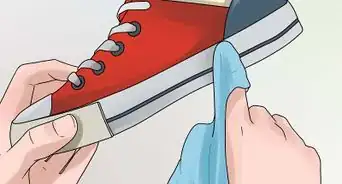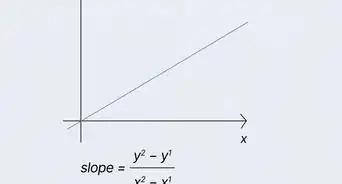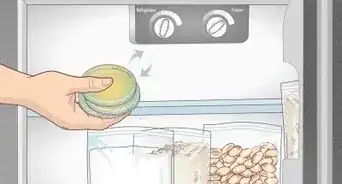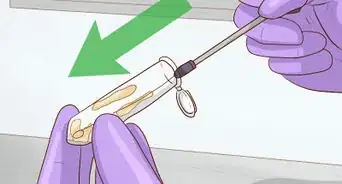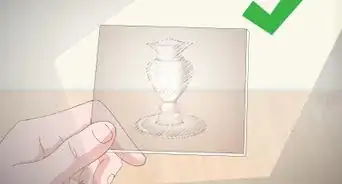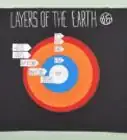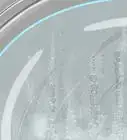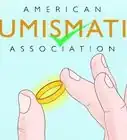This article was co-authored by Bess Ruff, MA. Bess Ruff is a Geography PhD student at Florida State University. She received her MA in Environmental Science and Management from the University of California, Santa Barbara in 2016. She has conducted survey work for marine spatial planning projects in the Caribbean and provided research support as a graduate fellow for the Sustainable Fisheries Group.
This article has been viewed 78,015 times.
Writing a title for your science project may seem like the hardest part. Where do you even begin? One thing to keep in mind is you need your title to tell your teacher, your classmates, and anyone one else who will see your project what it is about. That is, it needs to be informative but also short and to the point. You also want to draw people in, meaning you want them to be interested in your project based on your title. It can be difficult to balance these objectives, so start by coming up with ideas.
Steps
Writing the Title
-
1Brainstorm ideas and phrases. To brainstorm ideas, you'll need something to work on. Take out a piece of paper and a pen or pencil. You can use a computer, but it will probably be easier to see your progress on paper. Start writing down some thoughts and ideas about what your title could be.[1]
-
2Match the project content to the title. First and foremost, your title has to be descriptive. That is, it has to clue your audience in to what your project is about. You are going to tell them what your project is with the title, then show them the project with the board.[2]
- If you haven't already, take a minute to write a sentence describing your project.
- Use that information to guide your title. For instance, if your project is about the quality of water in Kansas City, your title should reflect that. A title like, “Kansas City Water Quality,” provides insight about your project without giving away too many details. On the other hand, a title like, “KC H2O,” is too broad and vague.
- If you're title makes a reference to something too obscure, your teacher probably won't get it.
Advertisement -
3Use what you have. Sometimes, you can find a title buried in your project. You may have already written something that will work as it is for the title or will work if you change it up a little.[3]
- Try reading through the text you wrote for your project.
- Copy down any sentence that may work for a title. Look for sentences that cover the main areas of your project. For instance, the sentence "Water in our city is not filtered properly and contains contaminants," may be a good descriptor of your project.
- Shorten it to make it more useful as a title: "Kansas City Water is Contaminated." You could also rephrase it to "Determining if Kansas City Water is Contaminated."
-
4Add a creative element. While you want your title to be informative, it's also good to make it creative. A creative title can draw your audience in, making them want to read more about your project. This element is sometimes called a "hook."
- For example, one option is to pick out concrete images to use. A concrete image is something that you can see, smell, taste, hear, or feel. For instance, something like, "Brown water came out of the faucet," is concrete.[4]
- Another way to add a creative element is to use a famous saying, poem, or song to play into your title. You can use the quote straight (with quotation marks) or twist it to make it work with your project. For instance, "Water, water everywhere and not a drop to drink" is a famous quotation Samuel Taylor Coleridge's The Rime of the Ancient Mariner that would work for a paper on contaminated water.
- Keep in mind that the title shouldn’t be too long or wordy.
-
5Take some time to play with the title. Don't just go with the first title you think of. Try to rearrange and play around with it to get the best title for your project.
- Also, consider trading in less specific words for more specific words. For instance, "water" in "Kansas City Water is Contaminated" could be more specific. You could write "Kansas City Tap Water is Contaminated."
- "Tap" indicates the water is coming out of everyone's tap, and it would certainly grab people's attention.
-
6Divide the title. One way to include both a creative element and an informative element is to split the title into two parts. In other words, you have a main title and a subtitle.
- This technique helps you use a creative title, but it also gives your reader the description they need to be informed about your project.
- For instance, you could write: "Water, Water Everywhere, and Not a Drop to Drink: The Contamination of Kansas City Tap Water." Generally, you put the subtitle on a second line. If it's included on the same line, you use a colon (:) to separate them.
-
7Make sure you include your main point. That is, with a science fair project, you've come to some conclusion. When you're writing your title, it's good to include at least an indication of that conclusion in your title. For instance, "Kansas City Water is Contaminated" already indicates your conclusion, that the water is contaminated.
- Also, make sure you include the keywords. Think of the main words that describe your topic. For instance, when writing a title for a project about contaminated water supply, obviously words like "water" and "contaminated" are crucial.
-
8Don't use uncommon abbreviations. Unless an abbreviations or acronym is commonly known, you shouldn't use it in your title. For instance, "USA" and "radar" are commonly accepted abbreviations/acronyms. However, using "CW" for "contaminated water" in your title will just confuse people.
Putting the Title on Your Board
-
1Make it readable. When your teacher is walking around the room looking at boards, your title needs to be readable. That means that it's in a good font, or that it is legible if you are writing it yourself.[5]
- In other words, don't choose fonts that are too fancy or have so many swirls that you can't read it.
- Also, make the lettering large enough to read it from 4 feet (1.2 m) away. Ask a parent to test it out.
- Stick to a single color. Choose a dark color for a light background or a light color for a dark background. Also, putting it in bold can help. You can make the subtitle in another color or smaller font to help people tell it is different from the main title.
-
2Make sure it is spelled correctly. The title is the first thing your teacher will see. If it's not spelled correctly, it can affect how they view your whole project. Use spell-check, and ask a parent to look it over for spelling.
- Mixing up "affect" and "effect" is a common mistake on science projects. "Affect" is a verb that creates "effects" (noun). For instance, "The scent affected the girl. The effect was her sneezing."
-
3Use title capitalization. Most words in a title should be capitalized. The exceptions are for articles (like “a,” “an,” or “the”), prepositions (such as “in,” “at,” “to,” or “on”), and coordinating conjunctions (like “and,” “but,” or “for”).[6]
- Note that if “the” is the first word of the title, it should be capitalized, but if it’s elsewhere within the title, keep it lowercase.
-
4Stick it in the center. While it may seem like a good idea to stretch your title across your project board, a title in the center is more readable. Try to fit the whole title in the center panel, so that your audience won't get confused.[7]
- In other words, if you have a trifold, skip putting parts of the title on the side panels.
- Your title may not fit all on one line in the center, and that's okay. Just go go the next line.
-
5Map it out first. You don't want to write your title in ink the first time. Write it out in pencil to make sure it looks okay. If you're using a printed title, make sure it fits before you start gluing it down.
- It can be helpful to try it several ways before writing or gluing. You may decide you like another arrangement better.
- Remember to center your title. That is, you probably don't want it all the way over to the left, unless you are running it down the board instead of across.
- Line it up. Make sure your title is straight across the board. Use a ruler to draw in lines in pencil if that will help. Just be sure to do draw them in lightly so you can erase them when you're done putting the title in.
-
6Put it on the board. Once you've determined that everything is perfect, it's time to put on the board. Draw out your letters or glue on the font to create your title. Stick to glue sticks, as tape looks messy and regular glue can wrinkle your paper.[8]
Community Q&A
-
QuestionCan you provide some examples of a catchy title I can use for a science project that models blood, blood cells and the reasons we need blood?
 Community Answer"Just Go With the Flow", or "No Veins, More Pain". These would help describe the importance of blood flow and why we need it.
Community Answer"Just Go With the Flow", or "No Veins, More Pain". These would help describe the importance of blood flow and why we need it. -
QuestionShould the title ask a question?
 Community AnswerThere is no problem in having a question as your title.
Community AnswerThere is no problem in having a question as your title. -
QuestionWhat is a good title for a soil experiment?
 Community Answer"Uncovering the Dirt on [whatever your experiment is about]."
Community Answer"Uncovering the Dirt on [whatever your experiment is about]."
References
- ↑ https://writingcenter.unc.edu/tips-and-tools/brainstorming/
- ↑ https://www.sciencebuddies.org/science-fair-projects/science-fair/display-board-fonts
- ↑ http://writing.umn.edu/sws/assets/pdf/quicktips/titles.pdf
- ↑ http://writing.umn.edu/sws/assets/pdf/quicktips/titles.pdf
- ↑ https://www.sciencebuddies.org/science-fair-projects/science-fair/display-board-fonts
- ↑ http://grammar.yourdictionary.com/capitalization/rules-for-capitalization-in-titles.html
- ↑ https://www.sciencebuddies.org/science-fair-projects/science-fair/science-fair-project-display-boards
- ↑ https://www.sciencebuddies.org/science-fair-projects/science-fair/science-fair-project-display-boards

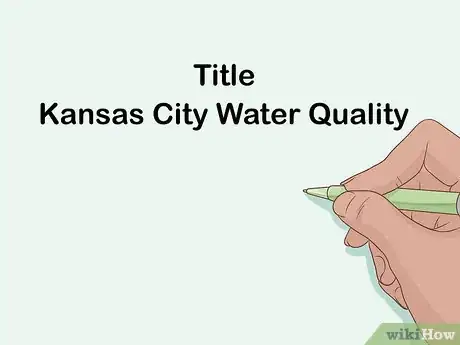
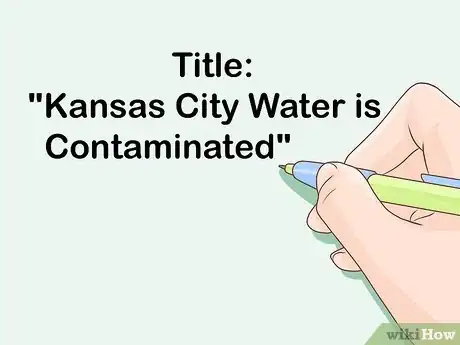
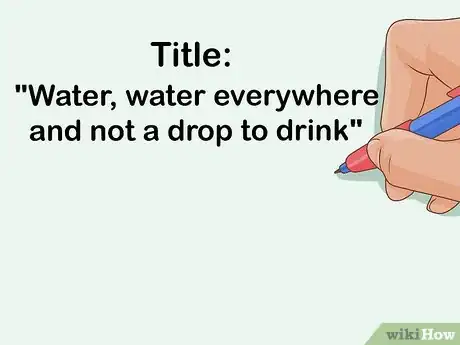
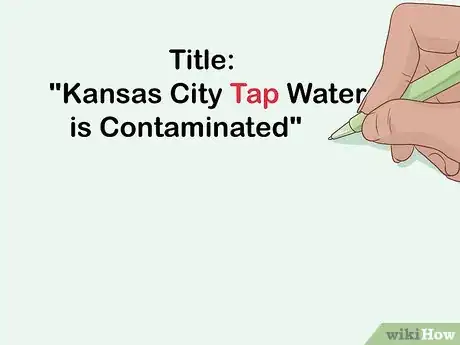

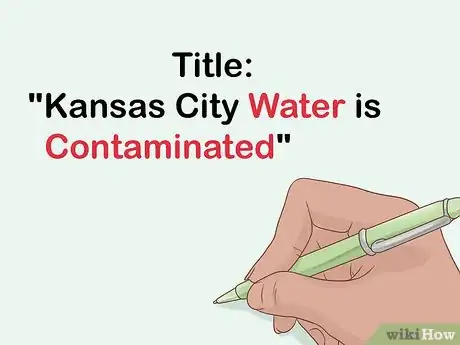
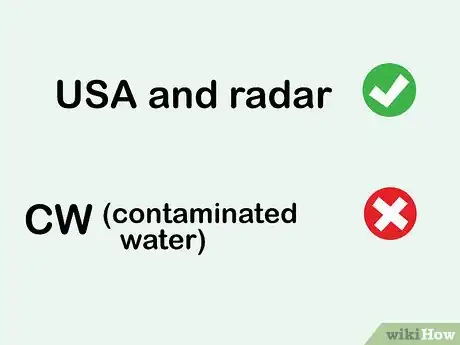

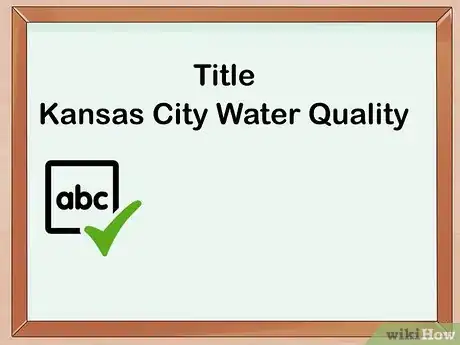
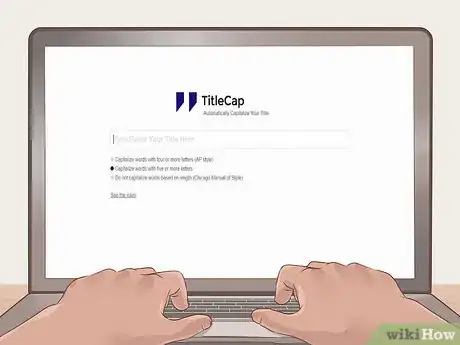
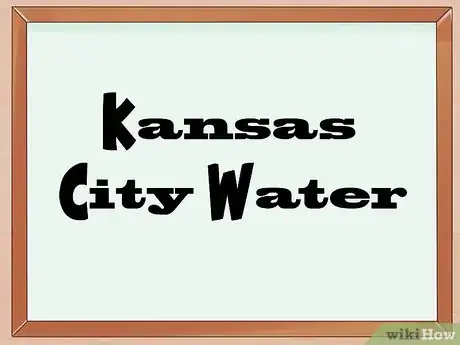
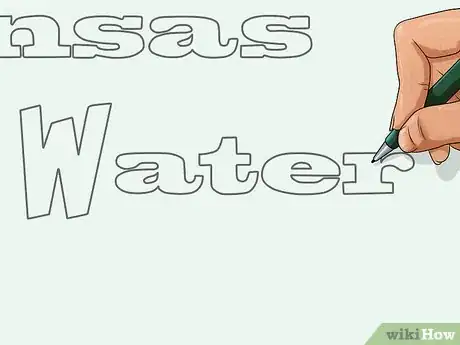

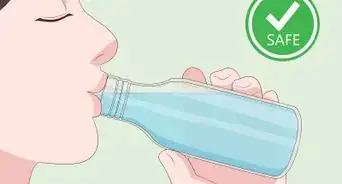
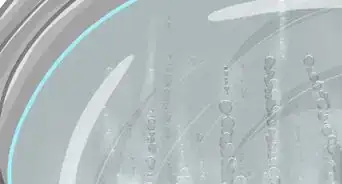
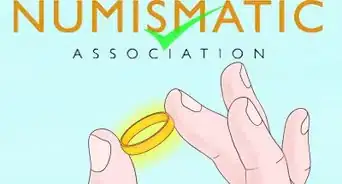
-Electric-Shock-Step-9.webp)

